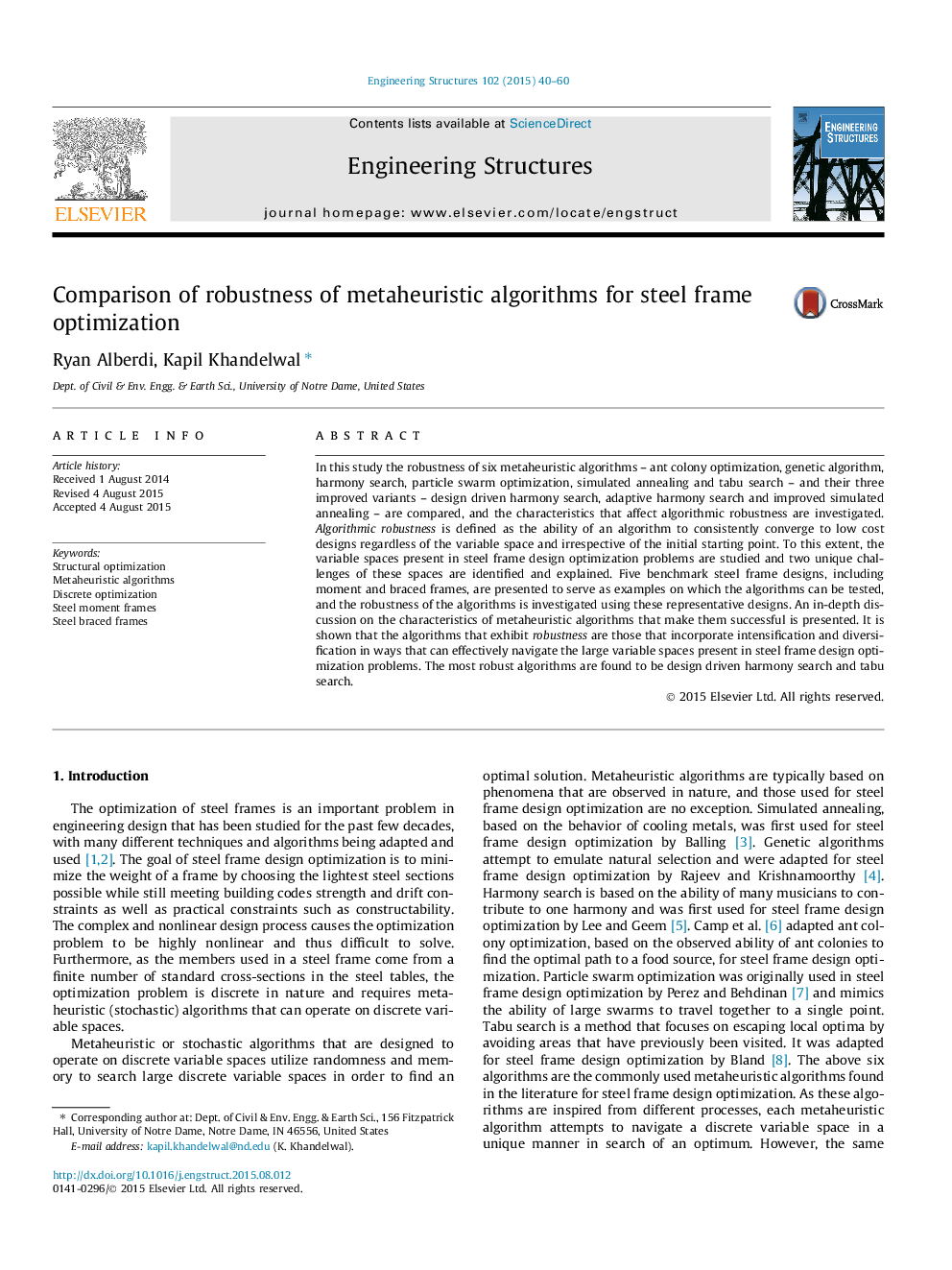| Article ID | Journal | Published Year | Pages | File Type |
|---|---|---|---|---|
| 6740276 | Engineering Structures | 2015 | 21 Pages |
Abstract
In this study the robustness of six metaheuristic algorithms - ant colony optimization, genetic algorithm, harmony search, particle swarm optimization, simulated annealing and tabu search - and their three improved variants - design driven harmony search, adaptive harmony search and improved simulated annealing - are compared, and the characteristics that affect algorithmic robustness are investigated. Algorithmic robustness is defined as the ability of an algorithm to consistently converge to low cost designs regardless of the variable space and irrespective of the initial starting point. To this extent, the variable spaces present in steel frame design optimization problems are studied and two unique challenges of these spaces are identified and explained. Five benchmark steel frame designs, including moment and braced frames, are presented to serve as examples on which the algorithms can be tested, and the robustness of the algorithms is investigated using these representative designs. An in-depth discussion on the characteristics of metaheuristic algorithms that make them successful is presented. It is shown that the algorithms that exhibit robustness are those that incorporate intensification and diversification in ways that can effectively navigate the large variable spaces present in steel frame design optimization problems. The most robust algorithms are found to be design driven harmony search and tabu search.
Keywords
Related Topics
Physical Sciences and Engineering
Earth and Planetary Sciences
Geotechnical Engineering and Engineering Geology
Authors
Ryan Alberdi, Kapil Khandelwal,
